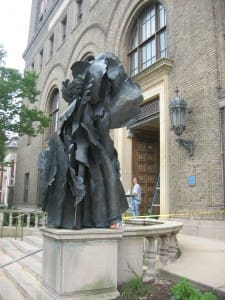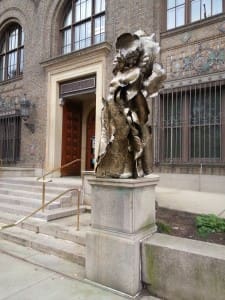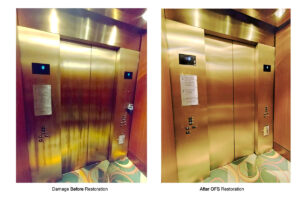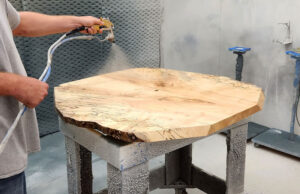OFS Corp. keeps properties looking their best after harsh, winter weather
It’s been another long, cold winter season here in New England and the experts at OFS are ready to get out of the shop and on location to restore and clean-up decorative wood and metal fixtures throughout the Northeast, especially surfaces that have been exposed to the elements.
For safety reasons, many properties use “salts” and similar chemicals to melt ice and keep sidewalks and stairs less slippery for pedestrians. Unfortunately, salts also have corrosive properties that can breakdown a finish, deteriorate a professional coating and in extreme cases, “rot” metal surfaces.
In commercial buildings, aluminum is commonly used as trim around doors and windows, and is especially susceptible to salt corrosion. As a protective measure, OFS recommends an annual cleanup for outdoor aluminum surfaces, with special attention to high traffic areas and entrances, which tend to have excessive salt exposure.
Attention to detail
Ornate metal trim, lighting fixtures and artistic sculpture give properties a classic “style” and “look”. When visitors see these features of a building, they often get a sense of history and culture. But, just like other metal surfaces, these items can become weathered and discolored over time.
In this example (on the left), bronze statues outside of the Connecticut State DEEP building at 79 Elm Street in Hartford had turned black from oxidation and exposure to the elements. After the OFS onsite crew applied professional cleaning and restoration techniques, both statues were returned to their original luster and shine (see photo on the right).
With bronze and other decorative metal, it is important to have experienced professionals handle the restoration task. The color variation that appears on the surface of sculpted metal is referred to as patina. In many instances, patina is applied by the artist to give a sculpture more depth and visual appeal.
Patination also occurs during oxidation, when the metal is exposed to the outdoor elements. In order to slow the oxidation process, the artist or gallery may apply a paste wax or lacquer to the surface before selling the item. Unfortunately, the changing color cannot be fully prevented, only slowed down. Therefore, during the cleaning process, we want to ensure that we remove only the unwanted patina, while preserving the original “look” and intricacy of the artwork.
In the CT DEEP example, the OFS crew actually used very mild cleaners and soft cloths. We always test our cleaning process on small, hidden areas of the artwork to make sure we get the desired results before cleaning areas that will be highly visible. It is a delicate process, but well worth it to preserve both historic and contemporary artwork alike.
Our job for the CT DEEP also included cleaning and restoring the building’s decorative wooden doors. Wood finishes suffer from exposure to salt, wind and precipitation, too.
The OFS Team was able to work on location, first stripping down the remnants of the old finish and then refinishing the wood to bring the color back to “life”. By restoring the statues and the entrance doors to their original beauty, visitors and staff are now able to fully appreciate the history and aesthetic of the property.





